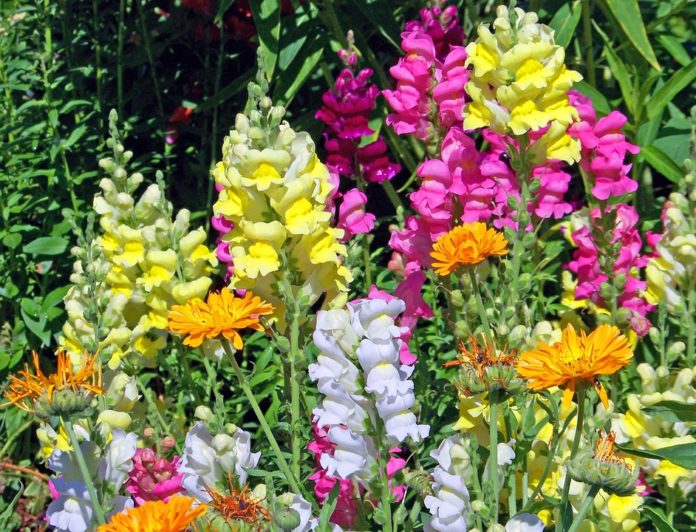Snapdragon flowers grown in tall spikes with double-sided, round petals. One of the more interesting snapdragon flower facts that a lot of people don’t know is that whenever you pick a flower and pinch it in the middle it will open so that you can see its colorful (everything from a purple snapdragon to a pink snapdragon flower is available), hairy throat.
On the road from Barcelona to the Pyrenees, snapdragons of the species Antirrhinum majus bloom in magenta at the beginning of the road, before a population of yellow flowering snapdragons takes over – separated by just a two-kilometer-long stretch in which flower colors mix. Such hybrid zones of snapdragons are quite infrequent; only a few others are known. But why don’t the snapdragons mix, with yellow and magenta flowers growing together over a wide area?
Nick Barton at the Institute of Science and Technology Austria (IST Austria), together with David Field, already postdoc in Barton’s group teamed up with molecular geneticists at the John Innes Center in Norwich to research the reasons for this example. In a new study, the researchers report that they recognized the genes responsible for flower color contrast from DNA sequence data.
Scientists compared the genome sequence of 50 snapdragons of each color and measured how much the sequences diverged between magenta and yellow snapdragon populations. By plotting a statistical measure of divergence between the two populations, they found “islands” in the genome which are more divergent between yellow and magenta snapdragons than the rest of the genome.
In the snapdragons, these islands correspond to genes responsible for flower color. The recent paper focuses on two of those genes, which determine the magenta pigment, and are located close together on the genome.
Nick Barton explained, “DNA sequencing is becoming cheaper and cheaper. But analyzing sequence data and interpreting the patterns seen is very hard. In this study, we used sequence data from Antirrhinum plants to locate the individual genes which are responsible for the difference in flower color across the hybrid zone.”
Scientists observed both in the field and in experiments at IST Austria. They found that honey bees like to fertilize the most common color flowers in a populace: in magenta populaces, honey bees pollinate magenta fuchsia flowers, in yellow populaces, honey bees generally fertilize yellow flowers. This determination for the commonest compose keeps the half and half zone sharp and anticipates trade of qualities that are connected to the flower color genes.
In the current study, the specialists needed to know how the two snapdragon populaces wind up various. They discovered two reasons why the snapdragon populaces diverge at flower color genes.
Firstly, selection has favored new variants at the color genes that make the flowers more attractive to bees – causing these genes to sweep through the population, and leaving a sharp signal in the DNA sequences. Secondly, the flower genes become barriers to gene exchange. Any genes located close to or even between the flower genes cannot easily be swapped between the populations, and so the region of genome around the genes that determine flower color become divergent.
Nick Barton said, “Even with abundant DNA sequence data, it is often difficult to find exactly why species are different. Our study is the culmination of years of work, combining fieldwork and population genetics with genetic crosses, and analysis of gene expression.”
Scientists reported their study in the journal PNAS.
